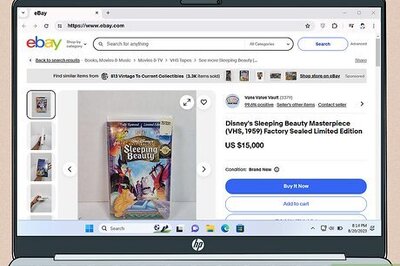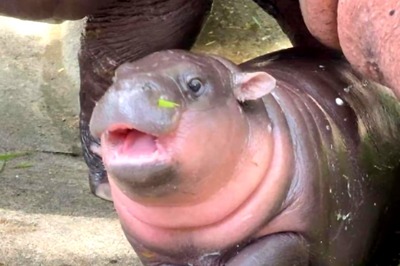
views
What is a manic pixie dream girl?
A manic pixie dream girl is a quirky female character in fiction. Coined by film critic Nathan Rabin in 2007, the term “manic pixie dream girl” was originally used to describe Kirsten Dunst’s character in the 2005 movie Elizabethtown. In his essay about the rom-com, Rabin described the manic pixie dream girl, or MPDG, as existing “solely in the fevered imaginations of sensitive writer-directors to teach broodingly soulful young men to embrace life and its infinite mysteries and adventures.” He noticed similar characters in other films, like Natalie Portman’s portrayal of Sam Feehan in Garden State, and realized that this was a new archetype. Rabin explained that “pixie” comes from the “otherworldly” way that these characters appear and act (bubbly, trusting, and whimsical). Rabin further elaborated on the male fantasy aspect of the trope, which involves being “saved from depression” and boredom by a fun, upbeat, and eccentric woman.
Is “manic pixie dream girl” problematic?
The term “manic pixie dream girl” has received backlash in recent years. Rabin himself recognized that the term was sexist, since it often reduced female characters to props instead of actual, multidimensional people. Another issue that arose is that “manic pixie dream girl” began being used as a blanket term for characters that didn’t necessarily fit the bill. For example, Diane Keaton’s portrayal of Annie Hall in the film of the same name is often viewed as far too complicated and nuanced to fall into the MPDG category, and yet lots of people believed her to be one. In short, the phrase has slowly started to phase out of common use in media, as many filmmakers and film enthusiasts believe it’s no longer a useful or inclusive label.
Manic Pixie Dream Girl Traits
Quirkiness Being quirky can be a real turn-on for these fictional male protagonists, and it can be as simple as having a unique hobby, haircut, or pet. Perhaps the MPDG is like Natalie Portman’s character in Garden State, and she has to make a silly sound accompanied by a silly dance every time she feels unoriginal. Or maybe she’s recently taken up spelunking and made it her whole personality, or has taken a momentary vow of silence just to hear her own thoughts better. Whatever her quirks are, the token male lead is sure to fall for her!
Whimsical worldview The MPDG belief system is all about finding reasons to really enjoy all that life has to offer, via the kaleidoscopic lens of a kooky gal. In the case of Kirsten Dunst’s character in Elizabethtown, Dunst moves through the world with a disarming optimism that is founded on long bubble baths, witty banter with strangers, and a need to say whatever thought floats to the surface of her mind exactly at that moment. Her childlike commitment to curiosity and humor is well reflected in her interactions with others—especially the buttoned-up male protagonist, played by Orlando Bloom.
Unconventional beauty MPDGs are different—they “aren’t like other girls”. This typically means that they have an eclectic sense of fashion, funky hairstyles, or unconventional aesthetics in general. This doesn’t mean that they’re not beautiful, as they are usually played by stunning Hollywood starlets, but instead suggests that their beauty requires a second look and an open mind.
Damsel in distress So our MPDG needs some saving— who doesn’t? Despite her fanciful point of view and thrifted cow fur coat, the trope suggests that this unlikely heroine needs the stable guidance of her stern and stoic male counterpart, just as much as he needs her spirited aimlessness. In the mind of the filmmaker, it’s a perfect pairing, with the same energy of a spunky Sagittarius gal and a trustworthy Taurus fella. (Although, depending on the brand of MPDG, she will either 100% believe in astrology or spend an entire monologue denouncing it.)
Manic Pixie Dream Girl Character Flaws
Naive MPDGs are not exactly known for being discerning, strategic, or assertive in their decision-making. In fact, quite the opposite. In the worlds of these films, manic pixie dream girls tend to be more naive than most, fluttering around without so much as a care in the world. While this may seem like a fun and carefree way to live, it can set up these characters to fail, as they are one plot twist away from having the rug pulled out from under them. In other words, MPDGs have little experience in the proverbial “real world” and often suffer because of it.
Unreliable Manic pixie dream girls are more likely to be frolicking in a field with a hummingbird for a sidekick than they are to help you move, water your plants while you’re away, or pay a single utility bill. Being reliable, grounded, and emotionally stable isn’t really the MPDG’s cup of tea and would be very off-brand for them. So, while you probably can’t rely on her to drive you to the airport at 6 AM, you can rely on her to make you laugh, and sometimes, that’s exactly what we need.
Lacks agency One of the most glaring critiques of the MPDG archetype is the fact that she seemingly only exists as an emotional support character for the male protagonist. Everything she does, from her colorful explanations about why art is important to her unrivaled optimism about love, is to inspire the male lead and propel the narrative forward. She seems to have no real motivations of her own, which leads to a flat character with no real depth that can’t stand alone. This trait has specifically been called out for being sexist, as the male protagonist is typically the more developed character.
Manic Pixie Dream Girl Examples
Clementine Kruczynski from Eternal Sunshine of the Spotless Mind (2004) Although this character’s place among manic pixie dream girls has been recently debated, Clementine Kruczynski held the title of the ultimate MPDG for a long time. Her bold choices of hair color, which often changed, were used to symbolize her own indecisive and unpredictable nature. Her more serious counterpart, Joel, played by Jim Carrey, falls in love with Clementine’s non-conformist sense of adventure, although it’s not always butterflies and rainbows in the end.
Ramona Flowers from Scott Pilgrim vs. the World (2010) Similar to Clementine, Ramona seemingly has different hair in every other scene, cementing the choice of bold hair as part of the MPDG trope. Played by Mary Elizabeth Winstead, she tells her love interest, Scott, played by Michael Cera, to avenge her by defeating her evil exes in a set of quests. Scott is, of course, smitten, and the rest is MPDG history.
Penny Lane from Almost Famous (2000) Most people are familiar with one of Kate Hudson’s most iconic roles: Penny Lane. A charming and trusting groupie to an up-and-coming rock band, Penny is the object of William Miller’s affections. Played by Jason Fugit, Miller is a journalist who can’t understand the allure of life on a tour bus, clearly the opposite of Penny. Despite their differences, he’s there for her when she needs it, which is all an MPDG could ever ask for.
Summer Finn from 500 Days of Summer (2009) This Marc Webb-directed drama-dy follows Joseph Gordon Levitt’s character, Tom, as his obsessive crush on his new co-worker, Summer, develops into a fragile situationship. Summer, played by Zooey Deschanel, is the textbook MPDG, complete with folksy singing, vintage outfits, and public oddball behavior, like yelling “penis” at the top of her lungs in a park. Is this the ultimate serious guy-manic pixie dream girl dynamic? Yes. Does it crash and burn miserably? Maybe.
Evolution of the Manic Pixie Dream Girl
In recent years, MPDGs have evolved to have richer backstories and more agency. In response to criticisms of earlier manic pixie dream girl characters, recent filmmakers have made efforts to improve on the trope’s shortcomings. Many have chosen to delve more deeply into their female protagonist’s past, attempting to explain why they are the way they are. Others have decided to explore specific mental health conditions, like depression or borderline personality disorder (BPD), in order to give their characters more depth and nuance. Examples of these newer MPDGs include Alaska from Looking for Alaska and Grace from Chemical Hearts. In Eternal Sunshine for the Spotless Mind, Kate Winslet plays the token MPDG, but revolts against the stereotype, delivering this iconic monologue: “I’m not a concept. Too many guys think I’m a concept, or I complete them, or I’m going to ‘make them alive,’ but I’m just a f****d up girl who’s looking for my peace of mind. Don’t assign me yours.” This quote perfectly encapsulates both the criticism of the trope and the attitude of current filmmakers trying to subvert and improve upon it—it’s interesting that it just so happens to be delivered by one of the first characters to be called an MPDG!
















Comments
0 comment